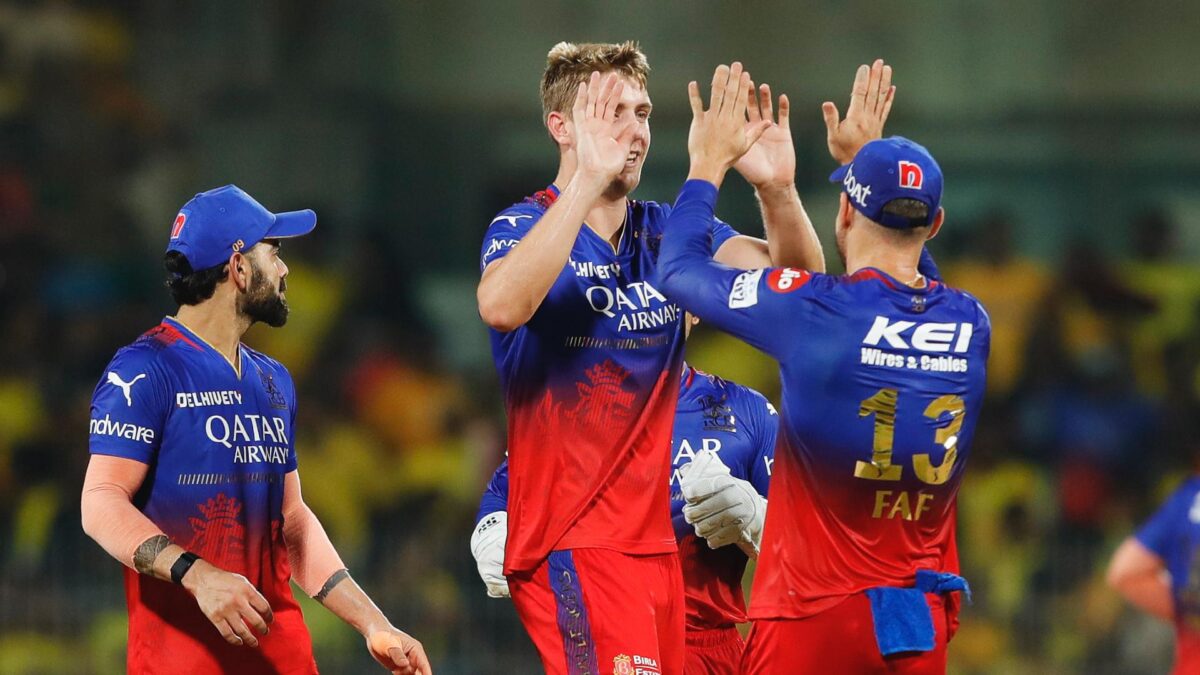
While the surgery has had positive outcomes for many players, it will be a long and uncertain road back for Cameron Green.

Australia and RCB all-rounder Cameron Green is set to undergo lower spine surgery as he has been diagnosed with his fifth stress fracture in the lower back.
The 25-year-old is facing a recovery period that could see him sidelined for at least six months, with his ability to bowl being in doubt for much longer.
The injury, which occurred during Australia’s tour of the UK in September, adds to the long list of back problems that have plagued Green throughout his career.
Green’s injury history with stress fractures began early in his career, and this latest setback only shows his vulnerability. Before making his Test debut in 2020, Green had already endured four stress fractures in his lower back, a recurring issue that had followed him from his junior playing days into his professional career.
Despite the best efforts of Cricket Australia’s (CA) medical staff, Green’s back issues have resurfaced at a time when he was becoming a pivotal figure in the national team.
The current fracture, different from previous ones, requires surgery that will involve inserting screws and a titanium cable into his lower back.
This specific procedure has been successfully performed on other cricketers, such as Jason Behrendorff, James Pattinson, and New Zealand’s Shane Bond and Matt Henry, all of whom have had lengthy recoveries but eventually returned to professional cricket.
Green is set to follow a similar path, having consulted Behrendorff, his Western Australia (WA) teammate, about the procedure.
While the average recovery time from this type of surgery is nine months, Cricket Australia believes Green could be back within six months. However, this timeframe likely applies only to his batting; his ability to bowl will take longer to assess, given the physical strain bowling puts on the lower back.
Even if his recovery goes according to plan, Green will miss Australia’s entire summer of cricket, which includes the highly anticipated five-Test series against India, a tour of Sri Lanka, and the Champions Trophy.
Looking ahead, Green’s involvement in the Indian Premier League (IPL) and the World Test Championship final next June (should Australia qualify) is not completely out of the question. However, the likelihood of him returning as an all-rounder—his bowling being a key part of his value—remains uncertain.
Green’s injury has reignited discussions within Australian cricket about workload management, particularly for all-rounders. Mitchell Marsh, another key figure in the team, was managed much more conservatively during the UK tour, bowling only four overs across the entire series.
In contrast, Green bowled 21.2 overs across five T20 Internationals (T20Is) and two One-Day Internationals (ODIs), including a taxing six-over spell in Chester-le-Street.
However, CA’s medical staff remains perplexed by how this latest fracture developed, given that Green’s bowling loads this year have been far lower than in previous years. In 2021 and 2022, Green bowled over 230 overs in matches, while in 2023, he managed 190 overs.
By comparison, he had only bowled 124.3 overs in 2024 before the injury. Coming off a rare 10-week break before the UK tour, there were no signs in his August scan indicating he was at risk of injury.
The type of surgery Green will undergo has seen mixed results but remains one of the most effective treatments for cricketers suffering from recurring stress fractures. Behrendorff, for instance, underwent the same surgery in 2019 and returned to professional cricket without major back issues, although he has not played first-class cricket since.
Similarly, Ben Dwarshuis and Matt Henry, who both had the procedure, have continued to perform at the highest level. However, there have also been cases like Kyle Jamieson, who has struggled to return to full fitness after the same operation.
The decision for Green to go under the knife was made after thorough consultation between him, CA’s medical team, and external experts. A statement from CA indicated that Green has a unique defect in an adjacent area to the fracture, which is believed to be contributing to the recurring injuries. Surgery was deemed the best course of action to stabilize this defect and prevent future occurrences.
While the surgery has had positive outcomes for many players, it will be a long and uncertain road back for Green. For now, Australia will have to navigate the upcoming cricket season without one of their most promising talents, hoping that Green can return fully fit and stronger than ever.